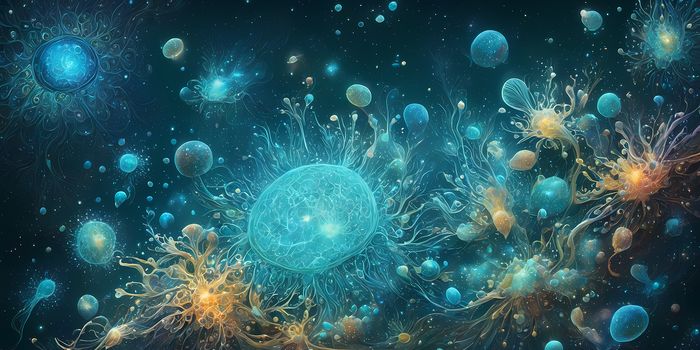Currently in the United States, 13 percent of the 1.2 million people infected with HIV are unaware of their condition (
AIDS.gov). HIV treatment is costly, and if the virus isn't contained, the infection will transition into the acquired immunodeficiency syndrome, commonly known as AIDS (
CDC). HIV has been intensely studied in the past few decades and has become a highly researched virus. Still, there are parts of its virulence that scientists still don't understand. Today, scientists from the University of Geneva and University of Trento peeled away an important layer of the HIV mystery by discovering a new membrane protein.

HIV has an accessory protein called Nef that is necessary for viral replication and development inside host cells. Since Nef's role is known to be vital to HIV virulence, multiple studies have surrounded inactivating, blocking, or otherwise stopping its action. Nef alters the attack of T lymphocytes, macrophages, and other key immune cells so the immune system can not adequately protect the body. In addition, Nef increases the infectivity of HIV viral particles. Geneva and Trento scientists realized that the action of Nef may explain why some human cells are more vulnerable to infection than others.
In their experiment, the researchers used an HIV strain with the Nef protein knocked out so they could visualize which host cells are targeted the most by HIV. The results showed that the cells least sensitive to the NEF knockout strain were cells containing a membrane protein, named SERINC5. Dr. Massimo Pizzato from the University of Trento and also the organizer of the study, explained the action of SERINC5 as a protein that warns other cells as HIV attempts to spread and replicate in different host cells. When the virus breaks free of one cell to infect and replicate in other cells, it takes SERINC5 membrane protein along with it. When attempting to infect a new cell, the presence of SERINC5 provides enough warning so "the virus is therefore no longer able to penetrate."
Putting two and two together, the team was able to determine that Nef inhibits SERINC5, allowing HIV to travel from cell to cell, infecting the host without raising any alarm. This conclusion comes from seeing in the experiment with the Nef knockouts that the cells with SERINC5 were not nearly as easily influenced by the mutant viral strain. Without Nef, SERINC5 worked like it is supposed to, warning the other cells of the oncoming infection.
This discovery of the connection between HIV accessory protein Nef and human membrane protein SERINC5 could be vital in taking the next step toward treating an HIV infection before it progresses to AIDS. The scientists involved in this study found that pushing expression of SERINC5 to levels that Nef cannot contain could be a new HIV treatment.
Frederico Santoni, co-author of the study and a scientist at Geneva, explains the significance of the results like this: "Moreover, contrary to the antiretroviral factors previously discovered, which are activated by interferon, SERINC5 is expressed continuously in all cells of our immune system."
The team looks ahead to the potential of turning the defensive mechanism of SERINC5 into new therapeutic options for the millions of patients with HIV infections.
Check out the following video from the Howard Hughes Medical Institute to learn more in detail about the replication and life cycle of HIV.
Sources:
EurekAlert and University of Geneva









